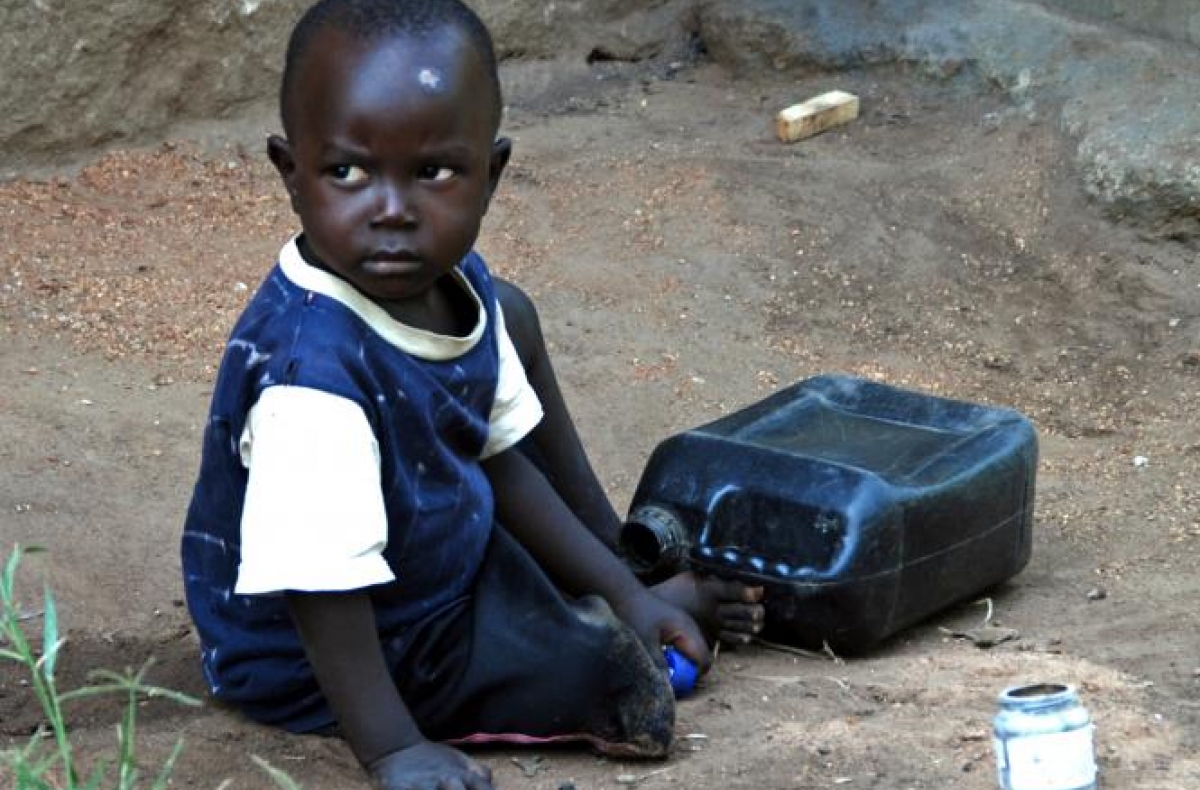Digging in the dirt for answers
Lauren Steinbaum discusses a recent study indicating interventions to limit children’s exposure to household soil could complement other parasitic worm control strategies.
June 28, 2016

Credit: Amy Pickering
Lauren Steinbaum knows her way around parasitic worms. The worms, collectively known as helminths, infect about 1.5 billion people worldwide, causing, physical and cognitive impairments.
Steinbaum, a Ph.D. candidate in environmental engineering at Stanford, is assessing the impact of a sanitation intervention on household fecal contamination by measuring the presence of helminth eggs transmitted in the soil before and after the intervention. She is also seeking to understand the rate at which children become infected with soil-transmitted helminths. WHD researchers Amy Pickering, Ali Boehm and Jenna Davis advise Steinbaum on the project.
Recently, Steinbaum co-authored a paper on the issue in Plos One. The study discovered helminth eggs in the soil of 27 percent of rural households in Kenya. Steinbaum and her colleagues found that eggs were equally likely to be near latrines as they were to be at house entrances, and that exposure to the worms can occur in spots such as food preparation and bathing areas. The findings suggest interventions to limit children’s exposure to household soil could complement other helminth control strategies (read the study).
Steinbaum discussed her thesis work, how it has evolved and the numerous obstacles and milestones she has encountered along the way.
What do you find most compelling about your research?
Despite being so prevalent, helminths are an under-studied topic (hence their classification as a neglected tropical disease). Current strategies for reducing the global prevalence of helminth infection focus on treatment with deworming pills. I think that my work is compelling because it focuses on prevention instead of treatment. Moving forward, I think that the best solution to reduce the prevalence of soil-transmitted helminth infection will incorporate both treatment and prevention.
How has working at Stanford influenced your research?
I started at Stanford thinking that I would work on an engineering-based solution to inactivate helminths. I had identified the “problem” as helminth infection and the “solution” as sanitation. Somewhere along the way, I realized that there are so many knowledge gaps about helminth transmission that it didn’t make sense for me to propose a solution to a problem that I (and the scientific community) did not thoroughly understand.
What has been the most challenging aspect of your work in the field?
I was surprised that the most challenging aspect of my work was the science behind it not the fact that I live in a small town in Kenya. In soil, you can find helminth eggs from humans, helminth eggs from animals, and plant and soil particles that look like helminth eggs. There isn’t a comprehensive resource on the different kinds of eggs that you can find in soil. Part way through my study, I realized that we were finding many eggs that looked similar, but not identical, to eggs that we counted for the study. They were different enough that I was hesitant to count them. I hadn’t noticed these eggs when I piloted the project the year before, and I had to look at veterinary parasitology resources online to figure out what the eggs were.
Any funny or exciting memories from the field?
My most challenging day in Kenya was Valentine’s Day 2015. It was a Saturday, but I had to work. I had to supervise our stool collection field staff on the first day of piloting our data collection. There were so many problems. I had to run through a bee swarm at 6 am to get to the office. The keys to the storeroom weren’t at the office. The trunk box on the motorcycle had been painted, and the paint was still wet. I had to sit between the wet box and the field staff on the motorcycle. I supervised two stool collection staff on motorcycles (called pikipiki here). We got lost. One of the pikipikis broke. At this point, it was comical the number of issues we ran into. We ended up working for almost 12 hours that day. This experience proved to me that it is absolutely crucial to pilot everything in the field before starting actual data collection.
Most of my exciting anecdotes are about things I’ve done outside of work. I thought I was going to die for a second when I went rafting on the Nile. I saw a cheetah catch and kill a baby impala in Maasai Mara. I travelled along the entire Kenyan coast. I went on a run with a friend near Lake Naivasha and we ran next to a group of giraffes and a zebra fight. I hiked to the top of Mt. Kenya. I climbed to the top of an active volcano in Ethiopia. Most recently, I rapelled down a waterfall in Uganda. My most exciting time at work was the first time I found a helminth egg in soil. It was proof that my study might actually work.
What is your next big research challenge?
To finish data analysis and manuscripts for my Ph.D. Over the next year, I’ll also help my advisor with another project in Kenya that will analyze stool samples using molecular methods. After that, I’m not sure. I would like to work on another project that seeks to reduce transmission of neglected tropical diseases through environmental/infrastructural interventions
Contact Information
Rob Jordan
Associate Editor, Environment and Sustainability, Woods Institute
rjordan@stanford.edu


